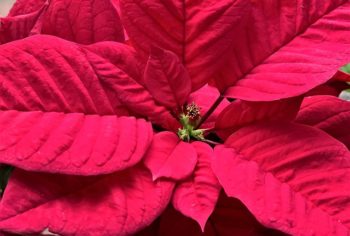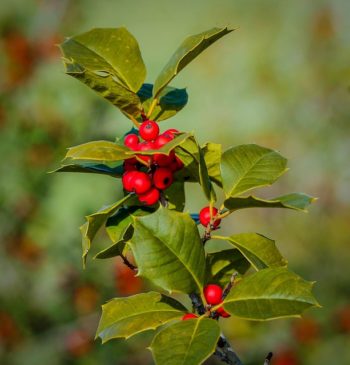 PRETTY HOLIDAY POISON — PROTECTING OUR PETS
PRETTY HOLIDAY POISON — PROTECTING OUR PETS
Hello everyone! It’s #FACTUAL FRIDAY and today we continue our THREE-PART SERIES on HOLIDAY PET SAFETY.
We’ve already discussed the 9 NO-NOs of PET HOLIDAY FOODS — and now we’ll discuss 5 HOLIDAY PLANTS that are beautiful to look at but toxic for our pets.
I know you feel the same way about your pets as I do mine. Many of you know I’ve relied heavily on my two Labradors over the last 20 years to comfort me and see me through 3 different cancers. So, now let’s return a small portion of the favors our pets share with us – and do everything we can to protect them throughout this Beautiful Holiday Season.
So, let’s get going with PRETTY BUT POISONOUS — 5 HOLIDAY PLANTS YOUR PETS NEED TO AVOID:
- POINSETTIA. Of all the holiday plants, perhaps none symbolizes the Season more than the traditional poinsettia. Available in many varieties, this holiday plant comes in white, pink, gold and ruby red colors. Now, technically this plant is not exactly poisonous to pets. Rather, the leave of this plant contains a sap that is irritating to the tissues of the mouth and esophagus of both cats and dogs. This sap also can cause nausea and vomiting. So, IF a large amount of poinsettia leaves were ingested by your pet it might result in a very toxic reaction. The GOOD NEWS here is that while the leaves of the poinsettia are very pretty to look at they have a very unpleasant taste. The chances of Fluffy or Fido eating them in large quantities is, therefore, not very likely.

- MISTLETOE. Unlike poinsettia, mistletoe contains multiple substances such as pharatoxin viscumin and toxalbumin that are quite toxic for cats and dogs. If eaten by your pet, mistletoe can cause a severe drop in blood pressure, respiratory problems and intestinal upset. So, when it comes to mistletoe a good rule of thumb is to hang it up high where it is out of reach of inquisitive pets – and happily used by humans for its intended purpose 🙂
- LILY AND AMARYLLIS. These are the gorgeous show-stoppers of the holiday season. The flowers of these plants are hard to beat for beauty. But, looks can be deceiving – and both these holiday favorites are highly toxic to pets. Sweet smelling lilies can have a severe negative impact on the intestinal tract and digestion of a cat. And, the beautiful amaryllis contains lycorine, which can cause abdominal pain, diarrhea and vomiting in both cats and dogs.
- HOLLY. Here we have another staple of the holiday season. Found everywhere this time of year, holly leaves and berries are loaded with chemicals, including saponins, ilicin and methylxanthines. All are toxic for both cats and dogs and if ingested can cause diarrhea and vomiting. They can even cause depression in pets – something no one wants to experience during the holidays.

- PINE NEEDLE. And, last on our list of 5 is the simple pine needle. Yes, they have a wonderful fragrance. And, nothing screams HOLIDAY like the smell of pine boughs in the house. But, this great aroma is the result of oils found in the pine needle. And if eaten by your pet, these oils can produce oral irritation, diarrhea and vomiting. They also can make your pet tired and lethargic. So, if you have pine boughs or a Christmas tree in your house be sure to clean regularly and sweep up all needles that fall to the floor.
And, that does it for today. These are the 5 most common holiday plants we enjoy this time of year – and these are the reasons we need to keep them out of reach of our beloved pets.
We’ve covered 9 HOLIDAY FOODS and 5 HOLIDAY PLANTS that can be harmful to our pets. And, next week we’ll continue with our THREE-PART SERIES by discussing 5 POPULAR HOLIDAY DECORATIONS that also can be harmful to our beloved cats and dogs.
So please, as you decorate and celebrate the Season let’s take simple precautions to make sure every member of the family is Safe, Happy and Healthy!
Thanks for joining me everyone. I’ll see you next time as we conclude our SERIES on HOLIDAY PET SAFETY. Until then, stay in GOOD HEALTH and . . .





Leave a Comment